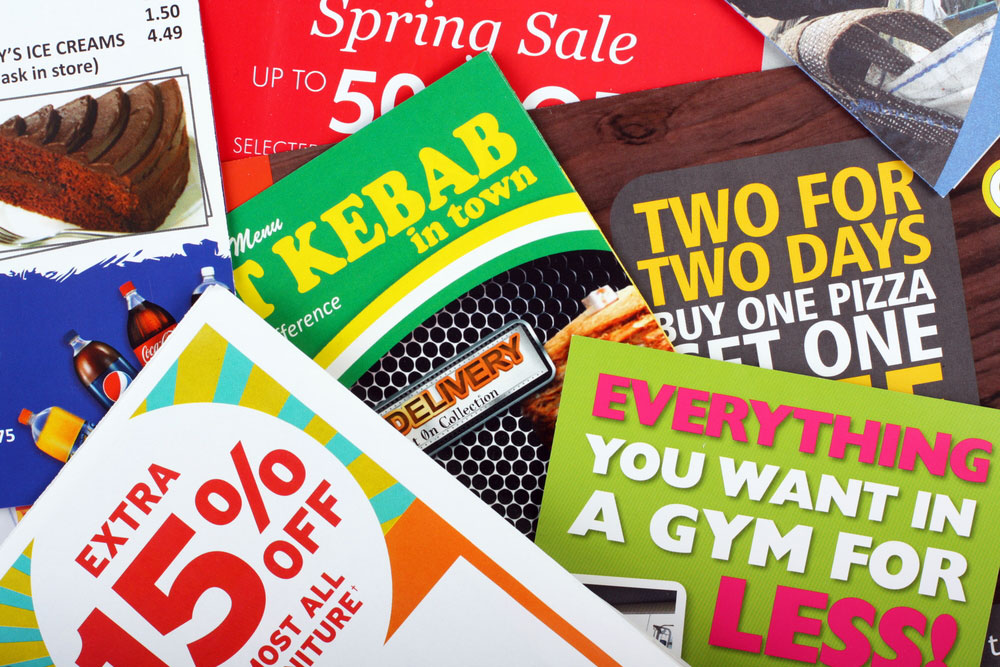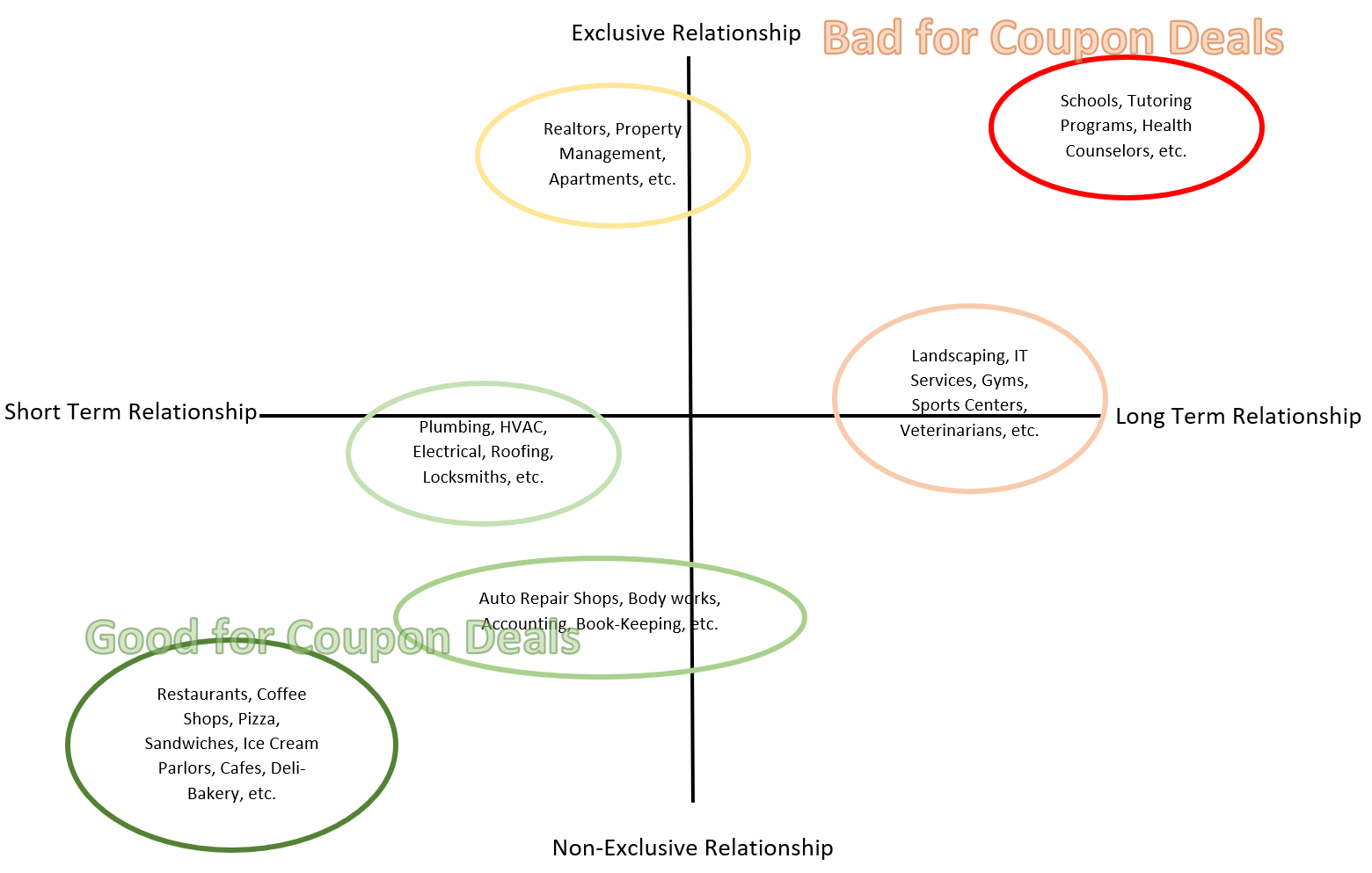|
|
How to run profitable coupon deals using direct mail marketing
Everyone knows what's "Direct mail marketing"; It's all those postcards and mailers you see in your mailbox. They come in many shapes and forms as small business marketers try all things they can to stand out. If you are wondering about the effectiveness of direct mail just ask any small business owner; According to the United States Postal Service, 79% of consumers still find reading mail more convenient than going online, and almost every small business spends money on some type of direct mail marketing. While it's clear that direct mail still works, it may not be for everyone. In this article we will discuss some of the important things you should keep in mind before putting your marketing dollars on direct mail marketing. After reading this article you'll have a clear idea of whether direct mail marketing is for you or not; and if it is, what's the best way to run it profitably. Is running coupon deals via direct mail right for your business?This is the first question you should be answering before venturing into direct mail marketing. Coupon deals aren't perfect for all types of businesses. Businesses that sell products or services where a "long term" or "exclusive" relationship may not be necessary benefit the most from direct mail coupons. Some examples of businesses that typically work on a "long term" or "exclusive" relationship are CPA firms, a legal councils, and realtors. Some examples of businesses that don't typically work that way are restaurants, salons, and many retail outlets. Below is a high level diagram showing different business types placed based on a typical nature of their relationship with their customers. As you can see, if your business is in the lower left quadrant, chances are coupon deals would be important for your customers; but if you are on the upper right quadrant, chances are coupon deals may not be that important for your customers.
As you observe this diagram please keep in mind that it is a very simplified take on business types; In reality each local business is very unique and every situation is different; so it would be wise to consult a marketing specialist before deciding whether coupon deals are right for you or not. What makes a good coupon deal?A good coupon deal is the one that creates a win-win situation for both parties, the customer and the business. While a higher discount will increase your chances of gaining a customer, it will lower your profit margin, and vice versa. Needless to mention, your offer needs to be at par or better than your competitors. Also, while calculating your profit margin, you should consider the "total revenue generated over lifetime" from a customer and not just your "first" transaction; in other words "total lifetime value" of the customer. For example, for a pizza shop, if a customer purchases $50 worth pizza every 3 months for 5 years on average, the "total lifetime value" would be $50 x 5 x 4 = $1000. Similarly, for a plumber, if a customer needs their service twice on average, and each time the cost is $500, the "total lifetime value" would be $500 x 2 = $1000 (which is same as that of a pizza customer). Now, knowing how "total lifetime value" is calculated (at least generally speaking), let's take an example to understand what kind of discount or offer would work for a business. Let's say your customer's "total lifetime value" is $1000, and that there's a 60% gross margin on the sale. Also, let's assume a very simple scenario where the larger your offer, the more customers you'd gain; so at 5% discount you'll get 1 customer, at 10% discount you'll get 2 customers, and so on. Now, let's see how your total gross profit would look like - Gross Margin: 60% Customer's "total lifetime value": $1000
For this business, a 30% discount would be most profitable. However, this is just one of the criterion. For example if competitors are running a 40% off deal, then this business will most likely need to do the same and find other ways to increase their gross profit. A real life example of coupon deals generating over 15 times return on investment!Here's a great example of coupon deals based direct mail marketing done right. ACME Landscaping (an anonymous name) company wants to find new customers in their service area. It's Spring time so an obvious offer would be around Spring Cleaning. ACME Landscaping hires Ellipsis Marketing to run coupon deals based direct mail marketing. Ellipsis Marketing researches the area and creates an overall strategy to create win-win situation for everyone. It is found that a "20% off" on regular Spring Cleaning prices will be a great offer; albeit it may not be the most profitable campaign for ACME Landscaping. It will be better than the local competition and at the same time won't put ACME at loss. Later on the customer acquired via this program will be upsold regular maintenance, thereby increasing the overall profitability from this campaign. Here's how - Since direct mail marketing works well if run more than once, and since this campaign is going to revolve around Spring Cleaning, a 3 months duration is considered appropriate. Also a target list of 1000 houses is selected. These houses receive 3 postcards (once each month). ACME Landscaping spends a total of $3000 on this campaign. From the 1000 houses, 20 call ACME Landscaping to discuss their Spring Cleaning needs. And 10 out of those actually end up hiring ACME Landscaping. Each house pays $500 for Spring Cleaning. Direct Mail Marketing Cost = $3000 Immediate Revenue Generated from Spring Cleaning = 10 x $500 = $5000 Direct Mail pays off itself for ACME; but it isn't "profitable" yet. Next, ACME Sales team calls the 10 households (that purchased Spring Cleaning) upselling their low cost monthly maintenance service. The service costs $100/month. Seven out of ten of those households agree and continue to use ACME Landscaping's monthly maintenance service for the next 3 years. Long Term Revenue Generated from Regular Maintenance = 7 x $1200 x 3 = $25,200 Besides this, 3 out of those 7 houses hire ACME for other landscaping work such as paver installation, tree removal, etc. generating another $15,000 of revenue. Total Lifetime Revenue = $5000 + $25200 + $15000 = $45,200 That's 15 times return on $3000 spent on direct mail! You may be asking, but well, what about the cost of upselling that regular maintenance? and how were those future projects won? There actually wasn't any money spent to win regular maintenance. ACME Landscaping simply mentioned the offer as part of their Spring Cleaning invoice and then made a follow up call. And the future projects came without ACME having to do any marketing to their customers.
So next time when you have a doubt about direct mail, talk with us; We will look at your individual situation and honestly tell you the truth. Again, direct mail is powerful, but it may not be the right fit for everyone. And that's why we are here to help you make the right marketing decision for your business.
Tags: direct mail, postcards, mailers, coupons, deals, small business, how to
------
Gautam Tandon Aug/24/2019 |
|
© 2024 Ellipsis Marketing LLC - Terms of Use & Privacy Policy Website Accessibility |


